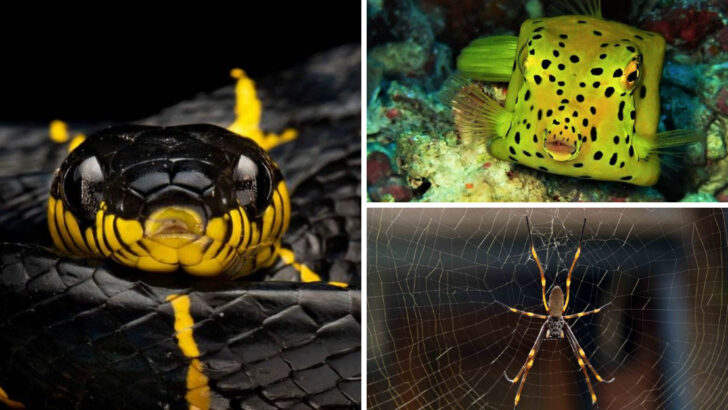Bright yellow doesn’t always mean friendly. In nature, it can be the ultimate warning sign—like flashing lights on a hazard zone. Some of the world’s most vibrant animals are also the most dangerous, hiding venom, poison, or pure aggression behind their sunshine-colored skin. They look like walking highlighters, but touch the wrong one, and you might seriously regret it. From tiny frogs that could stop your heart to glowing sea creatures with painful stings, these yellow wonders weren’t made for petting. They were made to be noticed… and avoided. So if you think color equals kindness, think again. These 12 deadly beauties are here to prove that even the brightest packages can carry the darkest surprises.
Golden Poison Dart Frog
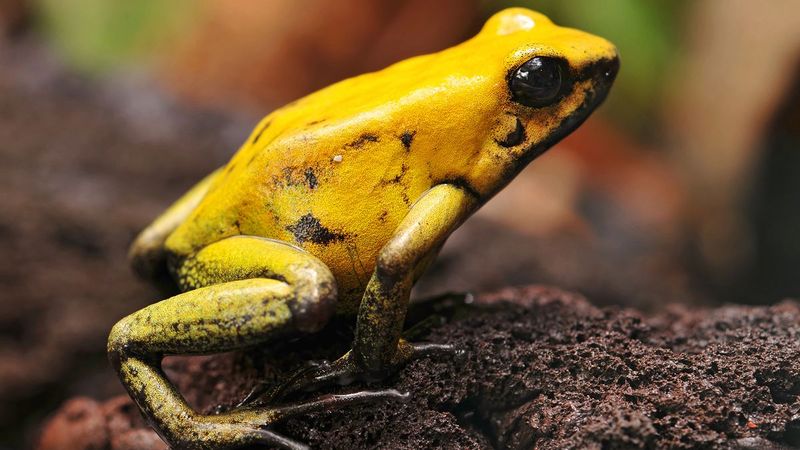
The golden poison dart frog, a small yet vibrant creature, boasts a striking yellow hue that warns predators of its lethal potency. Native to Colombia’s rainforests, this tiny amphibian secretes a potent toxin through its skin, capable of paralyzing and killing would-be attackers. Despite its fearsome reputation, the frog’s vivid color invites admiration. Those who encounter it are reminded of nature’s duality—beauty intertwined with danger. nnRemarkably, indigenous tribes have utilized this toxin for hunting, coating their blow darts to ensure a quick, efficient kill. At less than two inches long, its power is astonishing.
Yellow-Bellied Sea Snake
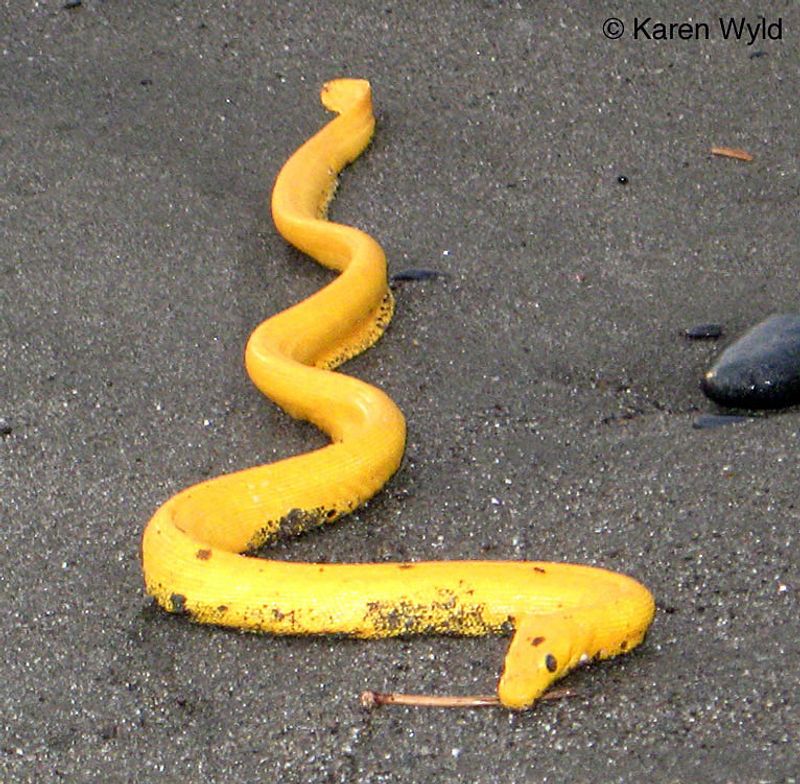
The yellow-bellied sea snake glides gracefully through the ocean, its vibrant yellow belly a stark contrast to the deep blue sea. Though beautiful, it harbors a potent venom, making it a formidable predator. This snake is one of the most widely distributed sea snakes, found in warm waters across the Indian and Pacific Oceans. nnIt preys on small fish, using its venom to immobilize them quickly. Despite its deadly nature, the snake is rarely aggressive toward humans. Its striking coloration serves as a cautionary flag to potential threats.
Yellow Boxfish
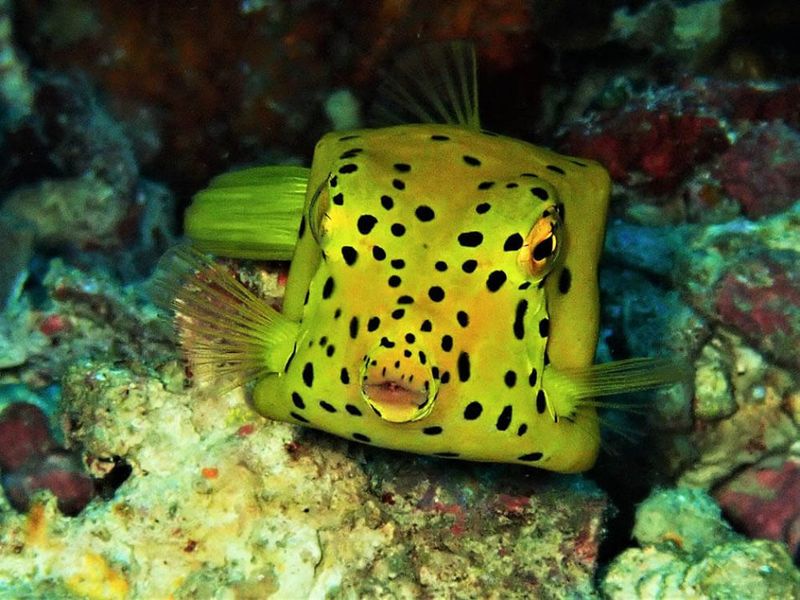
The yellow boxfish, often spotted in tropical seas, captivates with its peculiar shape and bright color. Its cube-like body is not just for show; it secretes a toxin when stressed, capable of harming surrounding fish. This unique defense mechanism ensures its survival in the vibrant reef environment. nnDespite its toxic nature, the boxfish exudes charm, attracting divers and marine enthusiasts. Its appearance is a delightful deception, hinting at harmlessness while masking a hidden danger. Observing this fish closely reveals the fascinating adaptations of ocean life.
Golden Silk Orb-Weaver Spider

The golden silk orb-weaver spider is a master architect, spinning webs that shimmer in golden hues. These webs are not just beautiful; they are among the strongest in the animal kingdom. The spider’s venom, though not deadly to humans, is potent enough to subdue its prey swiftly. nnFound in warm climates, this spider is a wonder of nature, both mesmerizing and intimidating. Its golden body serves as a beacon, warning of its predatory prowess. Encountering its web is a reminder of nature’s intricate designs and hidden threats.
Yellow Scorpion
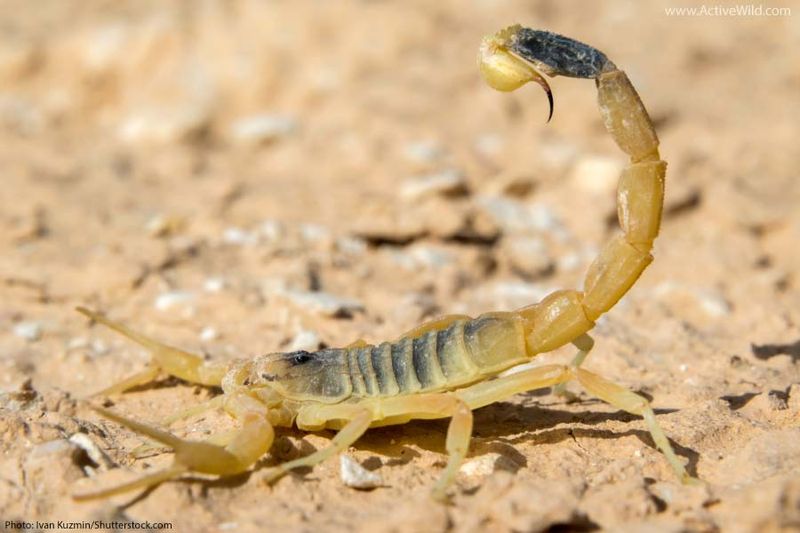
In the harsh deserts, the yellow scorpion prowls, its bright hue a stark warning to potential aggressors. This arachnid’s venomous sting delivers intense pain, serving as a powerful deterrent. Its adaptability allows it to thrive in arid environments where few others survive. nnDespite its fearsome appearance, the scorpion plays a crucial role in controlling pest populations. Its ability to glow under ultraviolet light adds to its mystique, captivating scientists and nature enthusiasts alike. This enigmatic predator is as dangerous as it is fascinating.
Yellow Wasp
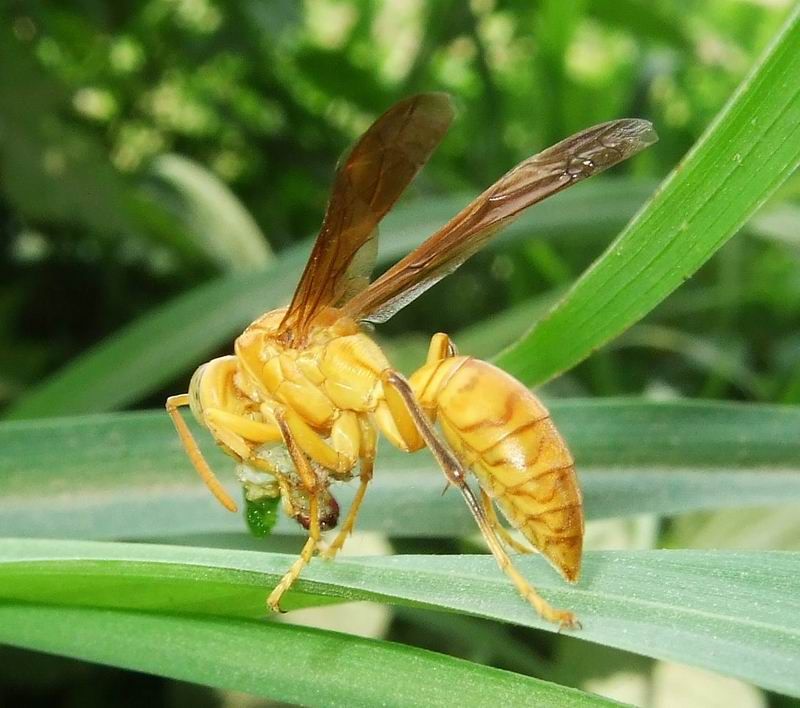
The yellow wasp, often mistaken for a harmless bee, commands respect with its potent sting. This insect’s yellow and black stripes serve as a universal warning signal. Known for their aggressive defense tactics, yellow wasps protect their nests with vigor. nnEncountering a swarm can be a daunting experience, as their stings cause significant pain and allergic reactions. Despite their fearsome nature, they play a vital role as pollinators and in controlling pest populations. This dual nature makes them both dreaded and essential in the ecosystem.
Yellow Tang

The yellow tang, a staple in tropical aquariums, mesmerizes with its sunlit hue. While seemingly gentle, this fish possesses sharp spines near its tail, used for defense. In the wild, these spines act as deterrents to predators, safeguarding its territory among the coral reefs. nnIn addition to its defensive adaptations, the yellow tang plays an important role in algae control, contributing to the health of coral ecosystems. Its vibrant color may lure observers, but its defensive traits ensure its survival in a competitive underwater world.
Golden Eagle
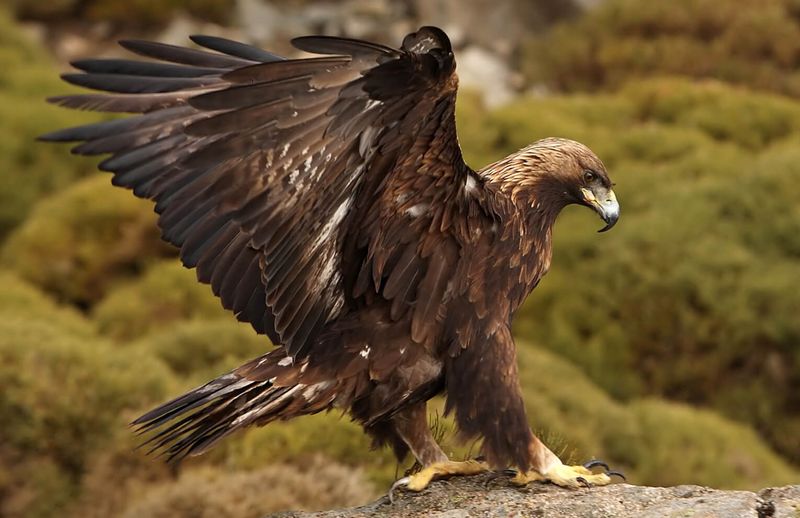
The golden eagle, a symbol of power and freedom, commands the skies with its formidable presence. This raptor’s keen eyesight and powerful talons make it a master hunter. Despite its name, the golden eagle’s plumage is more brown than yellow, save for a distinctive golden sheen on its head and neck. nnResiding in various habitats worldwide, it preys on mammals, birds, and even reptiles. This majestic bird’s grace belies its lethal prowess. Its striking appearance and hunting skill leave observers in awe of nature’s predatory elegance.
Yellow Garden Spider
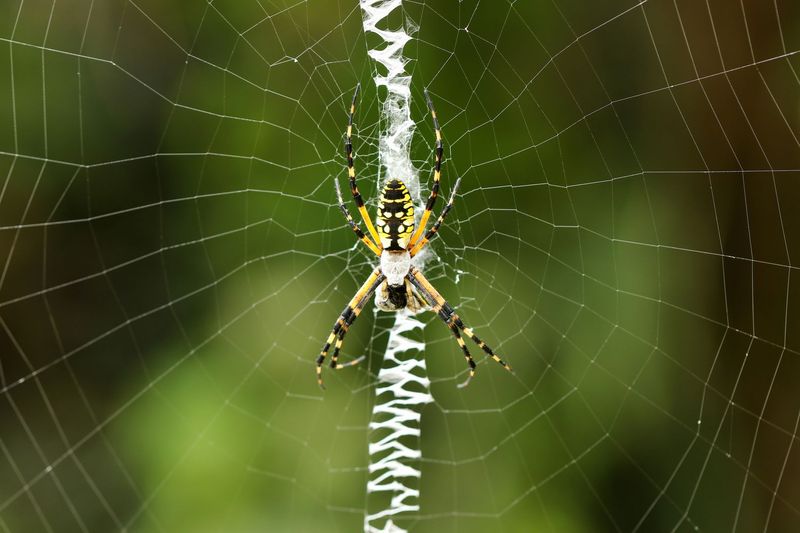
The yellow garden spider, a striking arachnid, weaves webs that are both artistic and functional. Its bold yellow and black pattern warns of its venomous bite, which, though mild to humans, is effective against insect prey. nnIn gardens across the world, this spider aids in pest control, trapping insects in its intricate web. Its presence in a garden is both a visual delight and a natural form of pest management. The spider’s vibrant colors and practical purpose highlight the balance of beauty and function in nature.
Yellow-Ringed Cat Snake
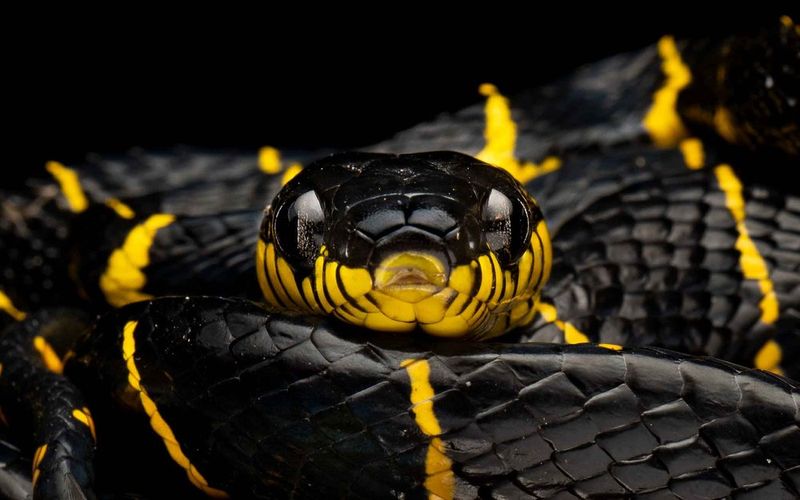
Slithering through the forest, the yellow-ringed cat snake captivates with its exotic appearance. This arboreal serpent, adorned with yellow and black rings, is both beautiful and lethal. Its venom, while mild to humans, effectively subdues its prey. nnPreferring the cover of night, it hunts birds and small mammals, utilizing its agility and stealth. The snake’s vibrant patterns serve as a warning, indicative of its defensive capabilities. Its beauty is a testament to the complex interplay between predator and prey in the natural world.
Yellow-Footed Rock Wallaby
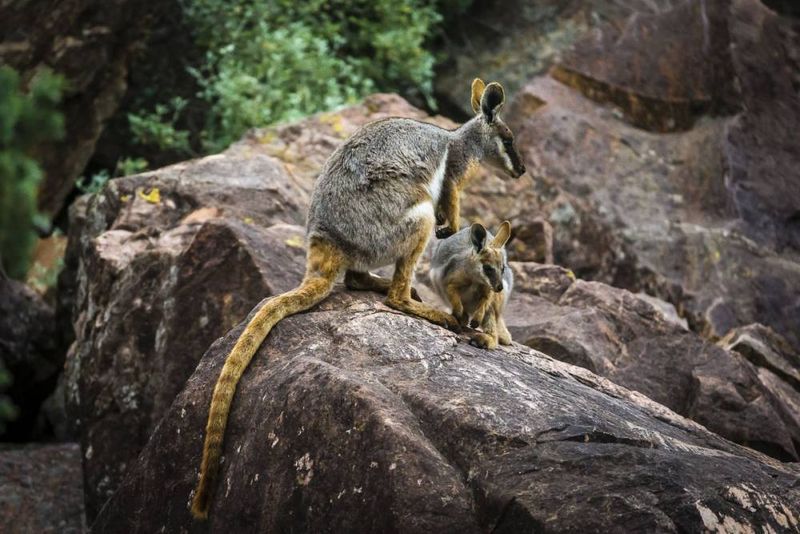
The yellow-footed rock wallaby, a nimble marsupial, bounds effortlessly across the rocky terrains of Australia. Its distinctive yellow-hued fur is an adaptation for blending into its arid surroundings. These agile creatures have a remarkable ability to scale steep cliffs and rocky outcrops. nnDespite their shy demeanor, when threatened, they can deliver powerful kicks. Their unique adaptations and striking appearance make them a symbol of survival and resilience in the harsh Australian landscape. Observing these wallabies in their natural habitat offers insight into the wonders of evolution.
Yellowtail Snapper
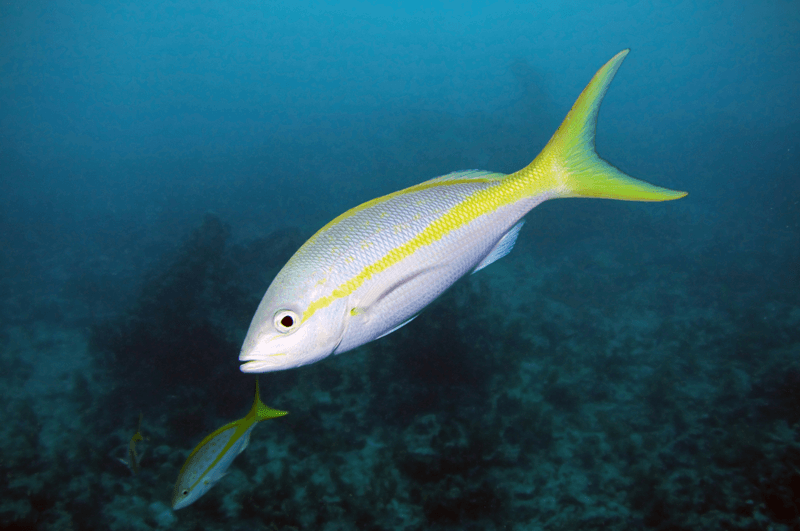
The yellowtail snapper glides through the ocean with a grace that belies its predatory skill. Its vibrant yellow tail and silver body are a common sight in the waters of the Caribbean and Atlantic. This fish is celebrated not only for its beauty but also for its importance in marine ecosystems. nnAs a predator, it helps maintain the balance of fish populations by preying on smaller species. Its striking appearance draws snorkelers and divers, inviting admiration while serving as a reminder of the ocean’s delicate balance.

